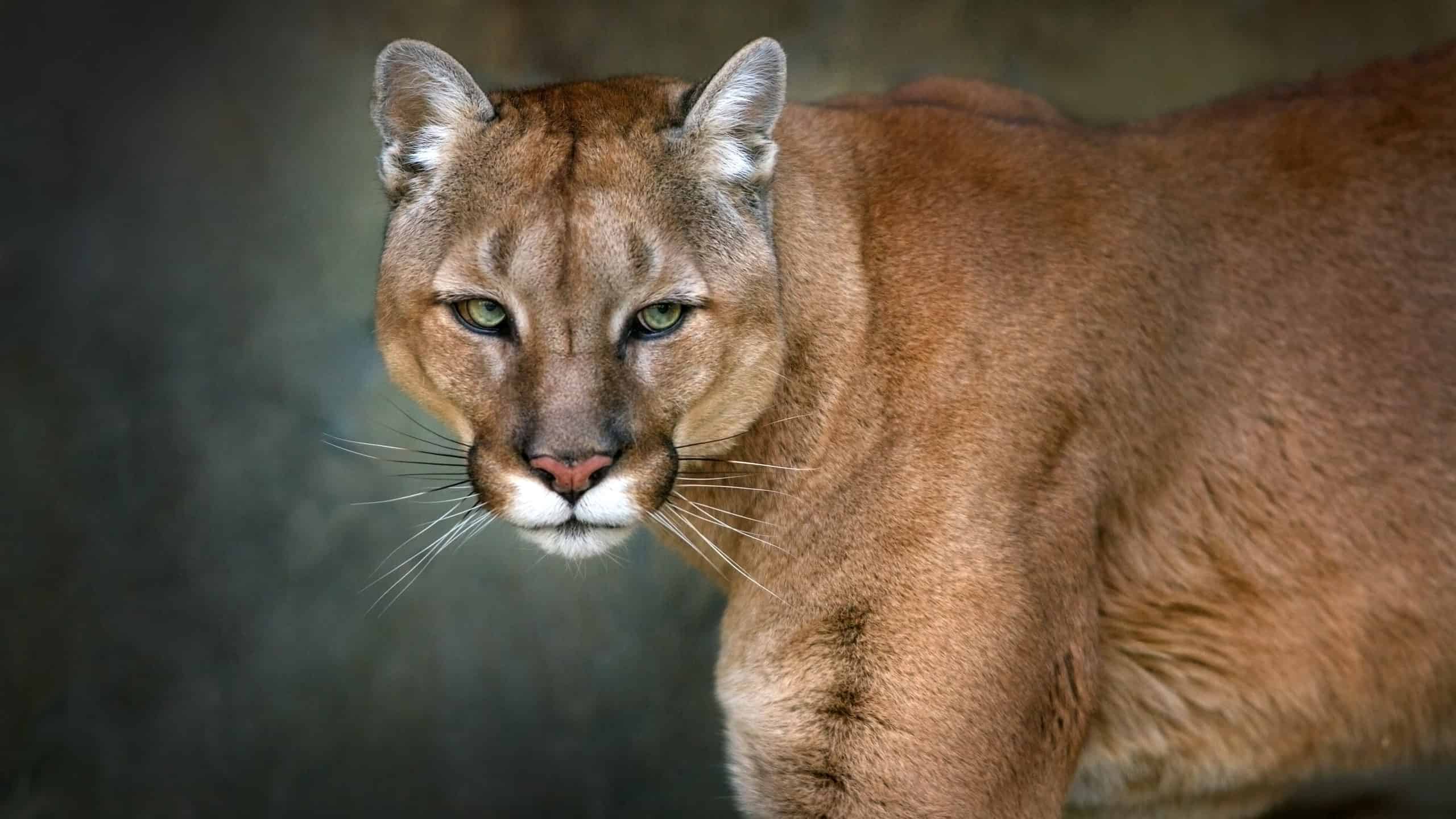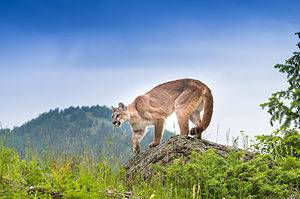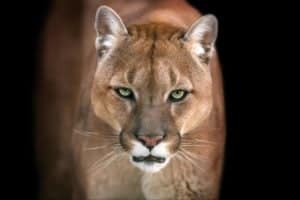With populations from Canada to Argentina, mountain lions, also known as cougars, are perhaps the most spread-out cats in the Americas. They inhabit mountainous, dry, swampy, tropical, and subtropical environments. These felines are active all year long.
Mountain lions prefer to stay away from people, yet they can and do coexist with us. When fewer people are around, they frequently become more active. The size and weight of male and female mountain lions differ, with males being roughly one-third larger than females.
Male adults can grow to be over eight feet long and weigh between 135 and 175 pounds. Female adults can grow to a maximum length of seven feet and average approximately 90 and 105 pounds.
Three-month-old kittens often weigh 15 to 20 pounds. Kittens typically weigh between 35 and 45 pounds at six months old. At the year mark, the average male mountain lion will already weigh 100 pounds. However, it takes about two years for a female cub to reach this weight.
The Largest Mountain Lion on Record

Although the location and timing of this cat’s capture are uncertain, the heaviest mountain lion ever caught is believed to have reached 276 pounds. This biggest mountain lion capture was a cat slain in British Columbia in 1979 and was recorded by the Boone and Crockett Club, a conservation and wildlife management organization founded by Theodore Roosevelt and George Bird Grinell in 1887.
This animal was killed by Douglas E. Schuk with the help of his expert hunting dogs. The howling of the hounds and the hissing of the cat in response indicated to Schuk that they were cornering the wild animal.
In order to prevent the massive mountain lion from hurting his dog, he fired a round at the cat. Schuk was aware that these enormous animals have the capacity of killing dogs with ease.
Factors That Determine the Size of a Mountain Lion
Thankfully, not all mountain lions reach nearly 300 pounds. Some are relatively larger than others. A few factors can make quite a difference when it comes to how big these cats can grow.
Where They Live
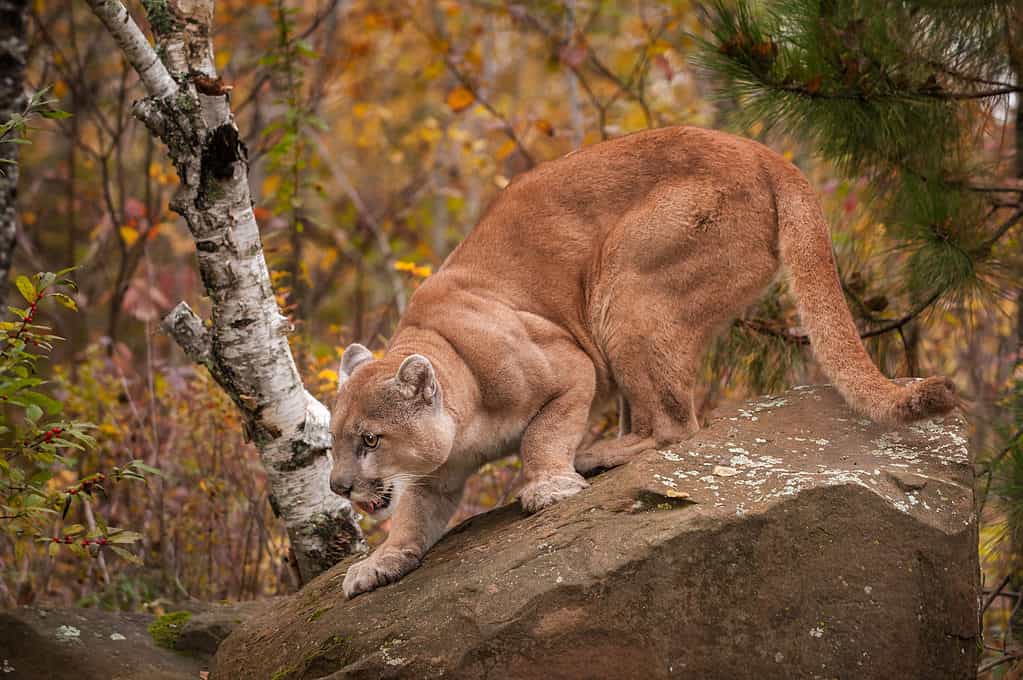
Mountain lions use rocks to get a vantage point of possible prey.
©Holly Kuchera/Shutterstock.com
Mountain lions typically inhabit areas where there are deer. Their habitat in nature is rough, steep valleys or mountains. One can find mountain lions anywhere from sea level to heights of 10,000 feet in both coastal woodlands and deserts.
The normal home range of an adult male is greater than 100 square miles, while that of a female usually covers between 20 and 60 square miles. This is one reason why males are often larger than females.
A bigger space to roam and hunt gives these cats more of an opportunity to find food. Previously located from coast to coast, nowadays, these cars are mostly restricted to 14 western states, with the exception of a small endangered group in Florida.
Something else to consider is the environment in which they live. A mountain lion that calls snowy peaks home is going to need more fat than one that roams in a desert. The colder the environment, the larger the mountain lion needs to be.
To defend their territory, they will engage in combat with other lions, sometimes resulting in death. In order to shield her young from attackers and male lions, a female with cubs is going to relocate to a new den location within the boundaries of her territory every several weeks.
What They Eat
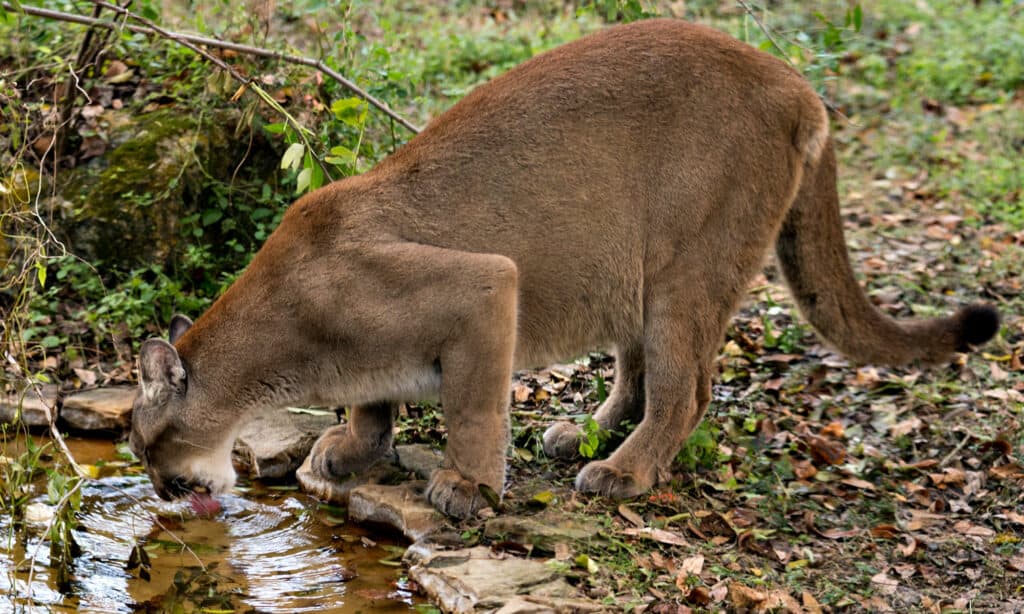
Naturally occurring watering holes attract a variety of wildlife.
©iStock.com/Rejean Bedard
Mountain lions are opportunistic predators who mainly hunt alone between nightfall and dawn, ambushing their prey, often deer, from behind. A lion often kills a deer once every nine to 12 days. They also eat elk, feral hogs, rats, smaller wild cats, raccoons, and even porcupines.
To keep the food away from predators and to prevent rotting, they drag the carcass to another location and bury it with dry foliage. Over a few days, a mountain lion may come back to the location to feast.
If they’re in an area with a bigger game, this allows them to eat more food with putting in less work.
Age and Genetics
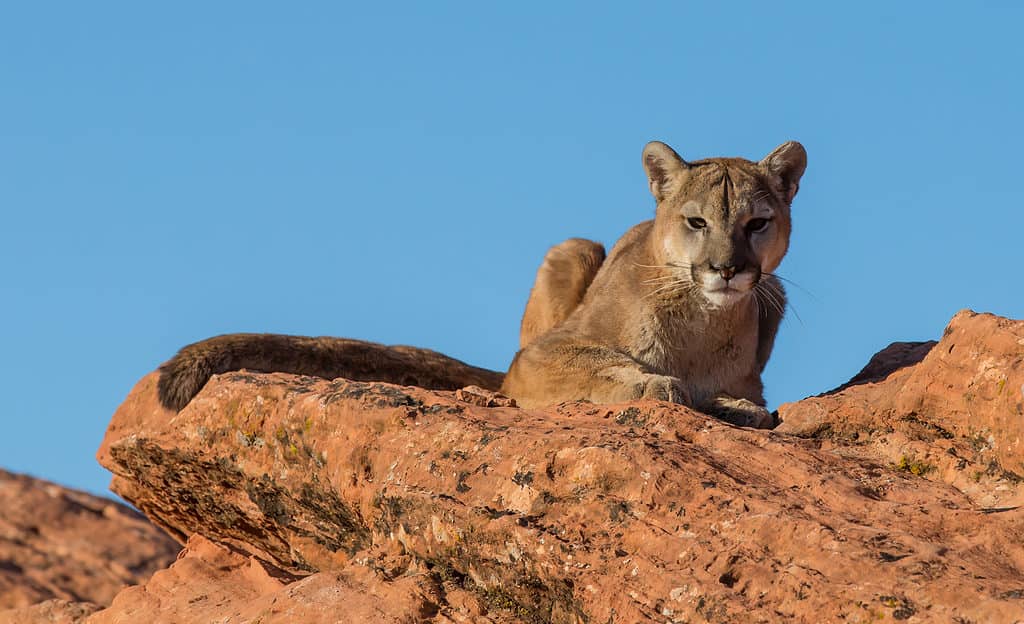
At the age of about seven weeks, mountain lions can start eating whole foods.
©Warren Metcalf/Shutterstock.com
Mountain lion youngsters first exclusively consume their mother’s milk, just like any other mammal. They can eventually wean and start eating whole foods around seven weeks after birth. During this time, the mother will provide food to the cubs for them to consume until they are old enough to go out and hunt by themselves.
Around four to six months old, when they have finished weaning, they will be able to begin hunting prey on their own. Their targets will typically be smaller creatures like bunnies and skunks. They will be able to hunt bigger prey as they get older and grow stronger, eventually being able to catch and kill deer, moose, and other typical prey animals with ease.
Thank you for reading! Have some feedback for us? Contact the AZ Animals editorial team.

